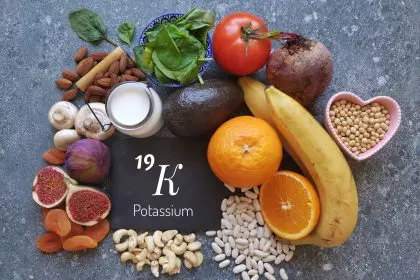Your daily food choices play a critical role in determining your overall health. What you eat can either fuel your body with the nutrients it needs or create long-term health issues. But how do you know if your eating habits are truly benefiting you? This question isn’t just for dietitians; everyone should be able to evaluate their health through their daily meals.
The relationship between food and health is complex, yet it can be simplified by looking at how your daily choices impact key health indicators. From energy levels to digestion, your body sends signals that reflect the quality of your diet. In this article, we’ll discuss seven practical methods to evaluate your health through your daily food choices. By implementing these methods, you’ll gain a clearer understanding of how your diet contributes to your overall well-being.
1. Pay attention to your energy levels
Energy is one of the first indicators of your health, and it’s directly tied to the food you consume. If your meals are balanced, providing an appropriate mix of carbohydrates, proteins and fats, your energy should remain stable throughout the day.
When you start your morning with a meal rich in complex carbohydrates like oatmeal or whole grain toast, paired with protein such as eggs, you set yourself up for sustained energy. On the other hand, if you feel sluggish after meals or require multiple caffeine boosts to stay awake, it could indicate an imbalance in your diet. Too much sugar or processed foods can cause energy spikes and crashes, leaving you exhausted by the afternoon.
Evaluating energy through balanced meals
A quick way to evaluate your health through food is by asking yourself: “Do I feel energized after eating, or do I feel sluggish?” If you’re constantly drained, it may be time to reexamine your food choices and opt for meals rich in nutrients that sustain energy — such as fruits, vegetables, whole grains and lean proteins.
2. Check your digestion
Your digestive system is an immediate reflection of how well your food choices align with your body’s needs. Healthy digestion — which includes regular bowel movements and minimal bloating or discomfort — typically indicates that your diet is working for you.
Eating fiber-rich foods such as fruits, vegetables and whole grains supports smooth digestion, while consuming too much processed food, red meat or high-fat items can cause constipation or indigestion.
Assessing health through digestive health
Notice how your stomach feels after a meal. Are you often bloated, experiencing discomfort or having irregular bowel movements? These signs may mean your body isn’t digesting food as efficiently as it should, prompting you to reevaluate your daily meals. Adding fiber-rich foods can be a simple yet powerful way to improve digestive health.
3. Monitor your skin health
What you eat doesn’t only affect your internal organs but also manifests in your skin. Skin issues such as acne, dryness or even a lack of glow could be the result of poor dietary choices. Nutrient-rich foods — particularly those high in vitamins A, C and E — help in maintaining healthy skin.
Fatty fish like salmon and mackerel are rich in omega-3 fatty acids — known for promoting skin hydration and preventing inflammation — while foods rich in antioxidants like berries and green leafy vegetables provide natural protection against skin damage.
Skin as a health mirror
Your skin can act as a mirror reflecting the health of your body. Notice whether your skin appears dull, has frequent breakouts or lacks elasticity. These could be signs that your diet is deficient in essential nutrients. Including more fruits, vegetables and healthy fats in your daily meals can transform your skin’s appearance over time.
4. Evaluate your sleep quality
Diet and sleep quality are intricately linked, as what you eat can either improve or disrupt your sleep patterns. Consuming large, heavy meals late at night — especially those high in fats and sugars — can make it difficult to fall asleep or result in restless nights. On the flip side, foods like almonds, turkey or bananas — which contain natural sleep-inducing compounds like tryptophan and magnesium — can promote better sleep.
The sleep-diet connection
If you’re struggling with sleep, take a look at your nighttime eating habits. Are you consuming caffeinated beverages late in the day? Are you eating heavy, greasy foods close to bedtime? Small changes — like opting for lighter meals in the evening — can drastically improve sleep quality and contribute to your overall health.
5. Notice your mood swings
Have you ever noticed that your mood changes after certain meals? Food directly impacts brain function, and a well-balanced diet can improve your mood, focus and mental clarity. For instance, foods rich in omega-3s — like flaxseeds and walnuts — are known to reduce symptoms of depression, while high-sugar diets are associated with mood swings and irritability.
Mood as a dietary indicator
Next time you experience a mood swing, consider what you recently ate. If you find that highly processed or sugary foods make you feel emotionally drained or irritable, it’s a clear sign that your diet could be affecting your mental well-being. Incorporating more plant-based foods, whole grains and lean proteins into your daily meals can help stabilize your mood.
6. Measure your weight and waistline
Your weight and waistline offer a visible way to track your health. Maintaining a healthy weight through balanced food choices is critical for preventing chronic diseases like diabetes and heart issues. But it’s not just about numbers on the scale — where you carry weight is also important. Abdominal fat — often a result of consuming too many processed foods and sugary beverages — is linked to various health risks.
Using your waistline as a health metric
By keeping track of your waistline and how your clothes fit, you can gauge whether your food choices are contributing to a healthier you. Consuming nutrient-dense foods such as whole grains, lean proteins and vegetables, rather than calorie-dense junk food, can help manage weight effectively and reduce the risk of chronic health issues.
7. Watch for cravings and hunger levels
Your cravings and hunger can tell you a lot about whether your meals are satisfying your body’s nutritional needs. If you find yourself constantly hungry or experiencing cravings for sugary or salty snacks, it might be a sign that your meals are lacking key nutrients, leading to imbalanced eating patterns.
Including a mix of protein, healthy fats and fiber in your meals helps to keep hunger at bay and prevents the need for unhealthy snacks.
Cravings as a health signal
Pay attention to when and what you crave. Are you reaching for a bag of chips after eating a meal high in refined carbs? This could indicate that your diet isn’t providing the nutrition you need. Balancing your daily food choices with proteins, healthy fats and complex carbs can curb those cravings and help maintain a healthier, more balanced diet.
Take charge of your health through your plate
Evaluating your health through your daily food choices empowers you to take charge of your well-being. From monitoring your energy levels and digestion to observing your skin, sleep and mood, your body provides valuable feedback on how well your diet supports your health.
By implementing small yet meaningful changes, such as opting for more nutrient-dense, whole foods, you can improve your overall health. It’s not just about dieting or calorie counting but understanding how your food choices impact every aspect of your life. Taking a closer look at your meals and adjusting your food habits can create a positive ripple effect, enhancing your energy, mood and even longevity. Start by incorporating these methods today, and see how the food you eat can be your greatest ally in living a healthier, more vibrant life.
This story was created using AI technology.













